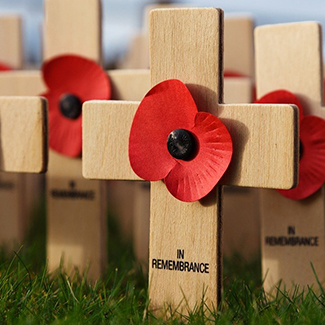Why the Poppy is the symbol of Remembrance Day
At the 11th hour, of the 11th day, of the 11th month, a silence falls across the nation. It has been happening since 1919 when a nation took time to mark the anniversary of The Great War. The war to end all wars.
By Peter Foy
In 1921 the poppy became associated with the act of remembrance, inspired, in part, by Lieutenant Colonel John McCrae’s poem “In Flanders Fields” and promoted by an American academic and a French woman, Anna Guerin, who persuaded the Royal British Legion to adopt it. In that first year, nine million poppies were sold by the Legion. The poppy is now synonymous with the act of remembrance but there is a much bigger story behind the paper, metal, or cloth tokens that we pin to our lapels.
| ...there is a much bigger story behind the paper, metal, or cloth tokens we pin to our lapels. |
The Royal British Legion is a major UK charity dedicated to supporting veterans and their families. Every year it provides practical assistance to thousands of people in need. This year, the Legion’s centenary year, 40,000 volunteers will be on the street collecting donations. But, throughout the year the Legion has 110,000 volunteers providing support to the Armed Forces community.

So while the poppy is a visible symbol of remembrance of those who made the ultimate sacrifice, it is also a practical way to fund help for those who returned wounded in body or mind.
Wearing a poppy is not the glorification of war. It is not a statement of approval of war in general or for a specific conflict. It is neither party political nor religious.
It is simply a way of expressing gratitude for those who have served. If you would like to find out more about the poppy, click on the link for 11 things you probably didn’t know: Royal British Legion - The Poppy
Published: 10 November 2021
© Copyright Just Recruitment 2021
If you enjoyed this article, you may like:
Why smart workers aren't busy doing nothing
The story of the first recorded Black musician in England is fascinating

